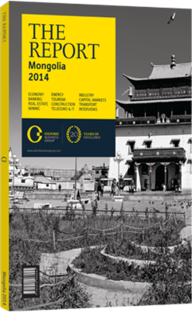ETT on deck: After some delay, the state-owned company is set to be opened up to the market
The initial public offering (IPO) of Erdenes Tavan Tolgoi (ETT) has been long delayed. If the giant multi-market stock sale can be completed, confidence could very well be restored and the capital markets of Mongolia could be revived. ETT has proven more difficult than first imagined, but much of what has held it back has been addressed and the transaction may go ahead according to the current schedule.
On The Block
ETT was formed in 2010 to own and manage the East Tsankhi section of the Tavan Tolgoi coal deposit. It was estimated at the time that the mine could produce 15m-30m tonnes of coal a year for 30 years. The idea at the time was to get 50% of the shares in the company into the markets, sell 10% to the citizens of Mongolia, 10% to Mongolian entities and 30% on the international market. According to initial reports, the total size of the listing would be $5bn and the company was to be traded on three exchanges – the Mongolia Stock Exchange, Hong Kong Stock Exchange and London Stock Exchange. At first, the prospects for the company seemed good. In 2011 ETT signed a $250m sales agreement with the Aluminium Corp of China ( Chalco), and plans were set in motion to get the massive listing off the ground by mid-2012. However, after the initial announcements, bad news started to roll in. In the spring of 2012, the company said it might have to delay the international portion of the deal by two months as the new securities law had not yet been passed. Without the new law, depository receipts for Hong Kong and London were not possible. Political turmoil surrounding parliamentary elections in 2012 was also a factor. As the battle for power heated up, the asset was targeted as a convenient source of funds. The government forced the firm to pay $669m to the Human Development Fund, and a change in the share split was pushed, with 20% to the people being proposed, reducing the international sale to 20%. Questions about the exact assets to be included in the stock sale were raised. The delays, falling coal prices and poor business decisions left the firm in bad shape in a short time. By early 2013, the mine was losing money on its sales to Chalco, running short on funds and in need of significant official support. It is expected now to list at earliest in 2015.
Run Of The Board
If the ETT transaction gets done, more sizable deals could follow. A run on the board would help restore confidence that transactions can be completed. The accomplishment of a multi-market listing would be particularly significant. It would show that complex deals are possible and could improve trading, as the liquidity of ETT could be high given the diversity of the shareholder base.
Considerable pent up demand exists for IPOs. Before the many delays of ETT, several potential IPOs were being contemplated. Dealmakers talked of a pipeline of major transactions. They identified not only more resource-related companies but also the privatisation of other state-owned enterprises and the listing of so-called national champions, holding companies set up to combine assets into formidable groupings. While few of these IPOs came to pass, a good deal of interest in privatisation remains among issuers and some investors. Deals currently being considered are the sale of the government’s 51% stake in the Erdenet copper mine and the listing of the country’s 34% share in Oyu Tolgoi.
IPOs could certainly be done before ETT is listed. The new securities law provides the right sort of legal environment to get the market going again. However, ETT represents a major piece of unfinished business that hangs over the market, and its IPO would be helpful in moving Mongolia’s capital markets forward. The selling of its shares in 2015 would show that the securities law was not only passed, but that the country is able to follow through on its commitments and accomplish its relevant goals. It would also show that the related regulations are robust enough to handle large and complex transactions.
You have reached the limit of premium articles you can view for free.
Choose from the options below to purchase print or digital editions of our Reports. You can also purchase a website subscription giving you unlimited access to all of our Reports online for 12 months.
If you have already purchased this Report or have a website subscription, please login to continue.

